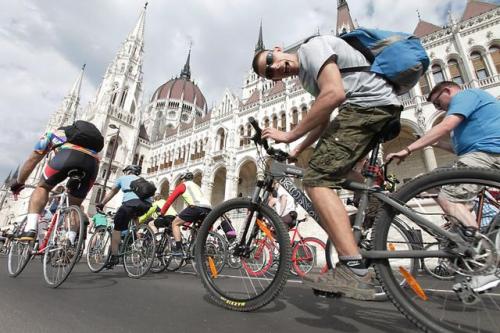How To Avoid Accident In Your Bike Trips
On weekdays to accompany children to school or on weekends during family walks, cycling is not without risk. Association Attitude Prevention advises learning to protect your children and yourself from any accident: compliance with the Highway Code, bike protections, equipment in good condition.
Besides the initial purchase of the bike and helmet, the practice of cycling has no real contraindication: everyone can practice it. It is the ideal activity in the context of a hobby in this summer period. It is still necessary to know the precautions of use to limit any risk of accident, in particular, if children join these exits. Indeed, the association Attitude Prevention says that every year, the bicycle is at the origin of accidents, sometimes fatal.
“The seriousness of the injuries can be explained by the low level of bike protection, even though the head is affected in more than one out of three accidents, and also by the imprudence of the cyclists vis-à-vis other road users,” says the association. This is why wearing a helmet is the first reflex to adopt. Note that since March 22, 2017, the wearing of a certified helmet is mandatory for any child under 12 years old by bike, whether on the handlebar or passenger. And even if it is no longer mandatory for older cyclists, it remains essential: it must be EC standards and be adjusted to the head. Add to this the other protections available (elbow guards, knee pads, glasses, gloves).
Avoid risky situations in the city
“Three out of four cyclists killed died of head trauma. Any shock to the head can cause serious brain damage, which wearing a helmet avoids,” recalls Attitude Prevention. For example, the French Institute for Public Health Indicates a risk of serious injuries divided by three thanks to bike protection. In addition to the helmet, these include a certified retro-reflective safety vest to wear out of night and day agglomeration in case of poor visibility, and mandatory equipment for the b icycle that is the rear and front brakes, a yellow front light or white, a red taillight, a bell, and a retro-reflective device.
icycle that is the rear and front brakes, a yellow front light or white, a red taillight, a bell, and a retro-reflective device.
The association also specifies that “the bike must be controlled by the child before even considering an exit where cars could circulate. It must be able to start without zigzagging, roll straight even at slow speed, slow down and brake without setting foot, keep a safe distance.” It should also be remembered that compliance with the Highway Code applies to both bicycle and car. A majority of bicycle accidents occur when a cyclist breaks a traffic rule, such as a violation of a priority at a crossing. Families must learn to avoid risky situations in the city, where there are more dangers to cycling than driving.
The recommendations are not to put yourself in the blind spot of a vehicle, try to make as much visual contact with the drivers as possible, drive in single file if there are several cyclists. Without forgetting not to overtake the vehicles by the right, to take as much as possible the cycle tracks and not to wear headphones. “Children under 8 are allowed to ride on sidewalks. Beyond this, they must travel on the roadway or prepared tracks,” says the association which emphasizes that from 8 years old, the learning of traffic on the road must be done gradually: it is not necessary to let it circulate alone before 10 years if it is in town or on busy roads